A sister is a gift to the heart, a friend to the spirit, a golden thread to the meaning of life.~ Isadora James
Why this Book? Why will it matter to kids?
Family relationships are at the center of a beginning reader’s life. Newly independent readers readily connect to stories about common sibling experiences, making the reading experience all the more engaging. Maddie and Mabel are sisters who share a special bond, the foundation of which is love, caring, kindness, mutual respect, and gentle humor.
Levels and Layers of Learning
Acceptance, compassion, concern, connection, creativity, dedication, diligence, effort, empathy, encouragement, empowerment, friendship, generosity of spirit, gratitude, helpfulness, hope, inspiration, kindness, loyalty, perseverance, persistence, perspective, resilience, resourcefulness, respect, responsible decision-making, relationship building , self-assurance, self-awareness, self-management, self-reliance, social awareness, tenacity, understanding
Using This Book in the Classroom
Hit the Ground Running
Ready Resources for Educators, Homeschoolers, and Parents
Maddie and Mabel Teacher’s Guides
See “Talk About It,” “Make a Kinder World,” and “Connect to Your Story” suggestions at the end of each Maddie and Mabel book.
Find conversation starters, activity sheets, and other resources for both Maddie and Mabel books on the Kind World Publishing website.
Write Away! Ideas to prompt writing
In the Maddie and Mabel books, the sisters play together, which sometimes means having to work out differences. Tell about a time when you played with a sibling or close friend and one of you got angry or upset. How did you solve the problem?
Are you more like Maddie or Mabel? Explain. Use an example. Give details.
How are Maddie and Mabel alike? How are they different? Explain, using examples.
Tell about a time when you did something new. How did you feel? How can you help someone else as they do something new?
In Maddie and Mabel Take the Lead, the sisters help each other do something they are uncertain about. Have you ever helped someone when they were afraid? Has someone helped you when you were unsure? Tell about the experience.
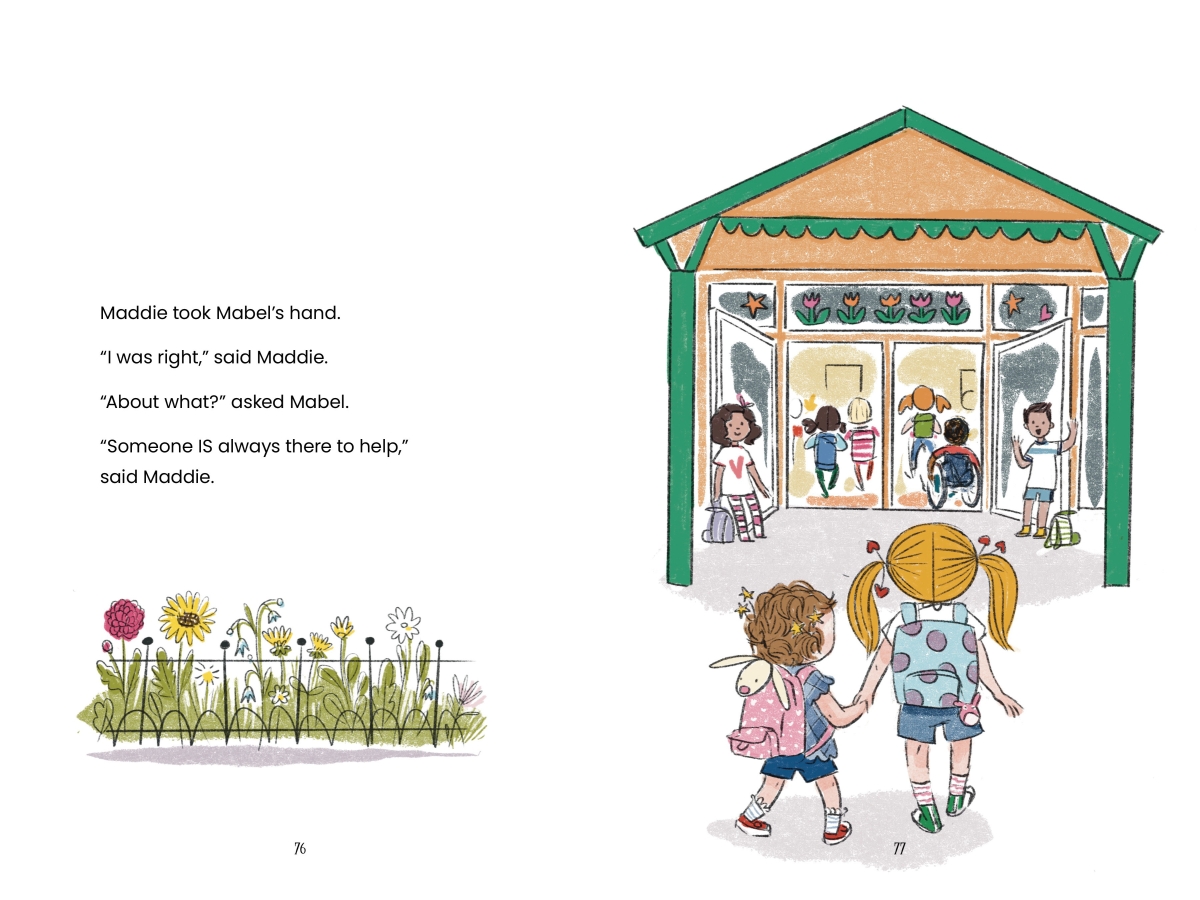
Illustration © Tatjana Mai-Wyss
Poetry Break Related poetry to recite before or following the reading of this book
Poetry breaks are brief moments that fit perfectly into the day—from opening or closing routines to lining up for lunch; from zipping up backpacks and jackets to transitioning from one subject to the next. Reading a poem typically takes less than a minute, yet it can introduce or reinforce a concept, provide clarity, celebrate language, exemplify rhythm, enhance vocabulary, expand understanding, increase attention span, initiate reflection, spark imagination, or simply summon a giggle. With an emphasis on rhythm, rhyme, and letter sounds, poetry bolsters reading and writing skills. As if that isn’t enough, poetry also soothes and strengthens the spirit.
Below are selected poetry books that pair well with the Maddie and Mabel books:
- The Cozy Book by Mary Ann Hoberman, illustrated by Betty Fraser
- A Family of Poems by Caroline Kennedy
- Fathers, Mothers, Sisters, Brothers: A Collection of Family Poems by Mary Ann Hoberman, illustrated by Marylin Hafner
- Friends and foes: poems about us all by Douglas Florian
- If I Were in Charge of the World and other worries by Judith Viorst, illustrated by Lynne Cherry
And Then There’s This…
Enrichment activities, related books, online resources, craft projects, and ideas for further study
The Boy Who Loved Maps is a sweet, reassuring picture book that celebrates friendship as well as a child’s love of mapmaking.
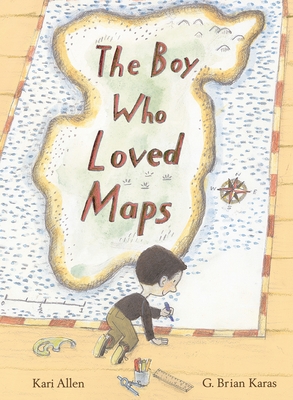
Find a terrific set of map activities at the back of The Boy Who Loved Maps.
Related Books of Interest:
Following is a list of books that partner well with The Boy Who Loved Maps:
- Follow That Map! A First Book of Mapping Skills by Scot Ritchie
- How I Learned Geography by Uri Shulevitz
- Ken Jennings’ Junior Genius Guides: Maps and Geography by Ken Jennings; illustrated by Mike Lowery
- Map Work by Bobby and June George, illustrated by Alyssa Nassner
- Me on the Map by Joan Sweeney, illustrated by Qin Leng
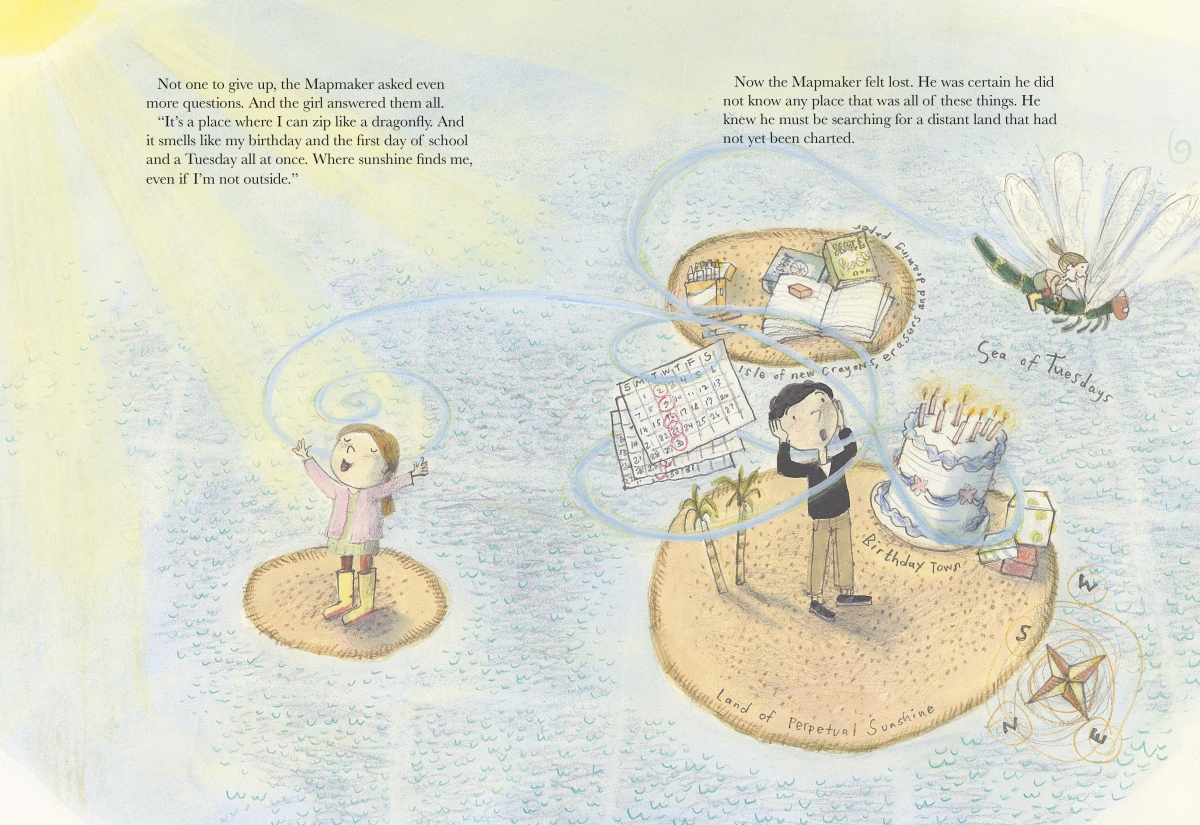
Illustration © G. Brian Karas
Meet the Author
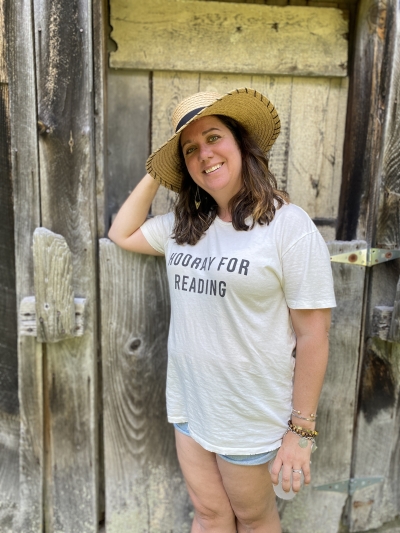
Kari grew up on a lake in New Hampshire with her sister and parents spending the summers swimming and eating blackberries. She went to a small school in central New Hampshire, so small that her graduating class had only 17 students. Kari has always loved reading and writing and channeled that love into pursuing degrees in English and Early Childhood Education, as well as a masters’ degree in the Teaching of Writing. She taught second grade before having her two boys and was able to be at home with them for a bit. She is now back in the classroom teaching second grade at the same independent school she attended. Kari loves watching how literacy develops in children. She loves seeing how kids connect to books and words and stories. Visit Kari’s website to learn more.
Backstory: Q & A with Kari Allen
Judy Bradbury: The first installment in the Maddie and Mabel early chapter book series, which is your first published book, was named a Junior Library Guild Gold Standard Selection. Kudos!! Its sequel, Maddie and Mabel Take the Lead comes out in October. But four years before that series debuted, you wrote–and sold—The Boy Who Loved Maps, which came out in July. How did you come to write each of these books? What seeded their creation?
Kari Allen: The Boy Who Loved Maps was a lightning strike writing moment. My oldest child loved to make maps and would ask me to pull up various things online so he could copy them. One day I offhandedly called him my mapmaker and I said, “That’s a good title for a book!” I went on to write the first draft pretty quickly. It’s the book that snagged my agent, Erzsi Deak, and the first book that we sold together!
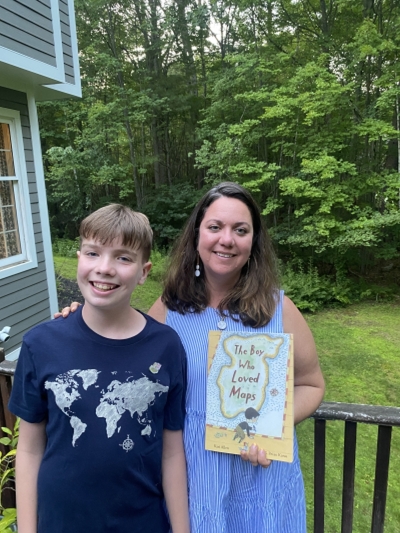
I wrote Maddie and Mabel ten years ago and it just took that long to find the exact right publisher for it (and for that I am extremely grateful to Patricia Stockland and Kind World Publishing). I wrote the first draft of the book in a children’s literature course I took at Grub Street in Boston. I would leave my house and travel down to the city, battling rush hour traffic and scraping together baby-sitting options as I was a stay-at-home parent at the time. I hate driving in the city, so obviously this class was important to me! It was an overview course with children’s writer Elaine Dimopoulos, and I asked her if I could attempt to write an early reader for one of our assignments. She gave me what resources she had for writing one and I tried it. That’s where the first seeds of the story started. Many early readers have two main characters that play off of each other. So I pulled seed material from my sister and me and our stories growing up. While the stories have obviously been revised and changed, much of that first manuscript is in the first book and some appears in the second and the third books!
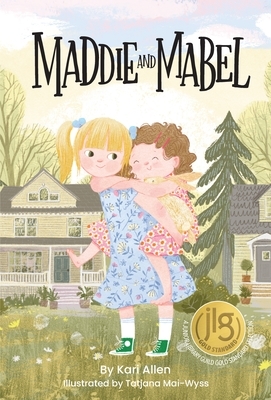
JB: I was immediately drawn to The Boy Who Loved Maps because a map of the setting of my chapter book series, The Cayuga Island Kids, is featured at the beginning of each book. I love that it helps readers visualize the setting, which is almost like a character in my books. As a teacher of second graders and a parent to young boys, what is it about maps and globes that you find appeals to your target audience?
KA: There’s something about maps that kids just love. For some reason, a lot of children are just drawn to them. I think it helps them visualize the world around them. But also, you can make a map of anything. You can map your day or of a made-up place! Since the release of The Boy WHo Loved Maps I’ve had so many grownups tell me how much they loved maps, too. I just think there is something magical about them.
JB: In Maddie and Mabel and Maddie and Mabel Take the Lead newly independent readers are treated to simple adventures threaded with the challenges and joys of sisterhood. How did you decide what to include in these stories, and how did you distill those parts to simple but active lines of text that offer beginning readers accessible and entertaining stories?
KA: Because I teach second grade, early readers and texts for newly independent readers are something I am very passionate about. Some of my favorite books are early readers because I see the impact they can have on a child. As I was writing Maddie And Mabel, I looked at a bunch of early readers and made a chart about how many words and how many chapters they had. I even hand counted the amount of words in a chapter! Then it was about cutting: what could be told with just dialogue and a few stage directions and still have the heart I wanted the book to have. Sometimes I write the chapter out using all the words I want and then focus on the words that I need. Cutting, revising, and editing is a huge part of writing an early reader. It’s about balance and asking myself, what new vocabulary or spelling patterns can I introduce and still have a newly independent reader still feel confident?
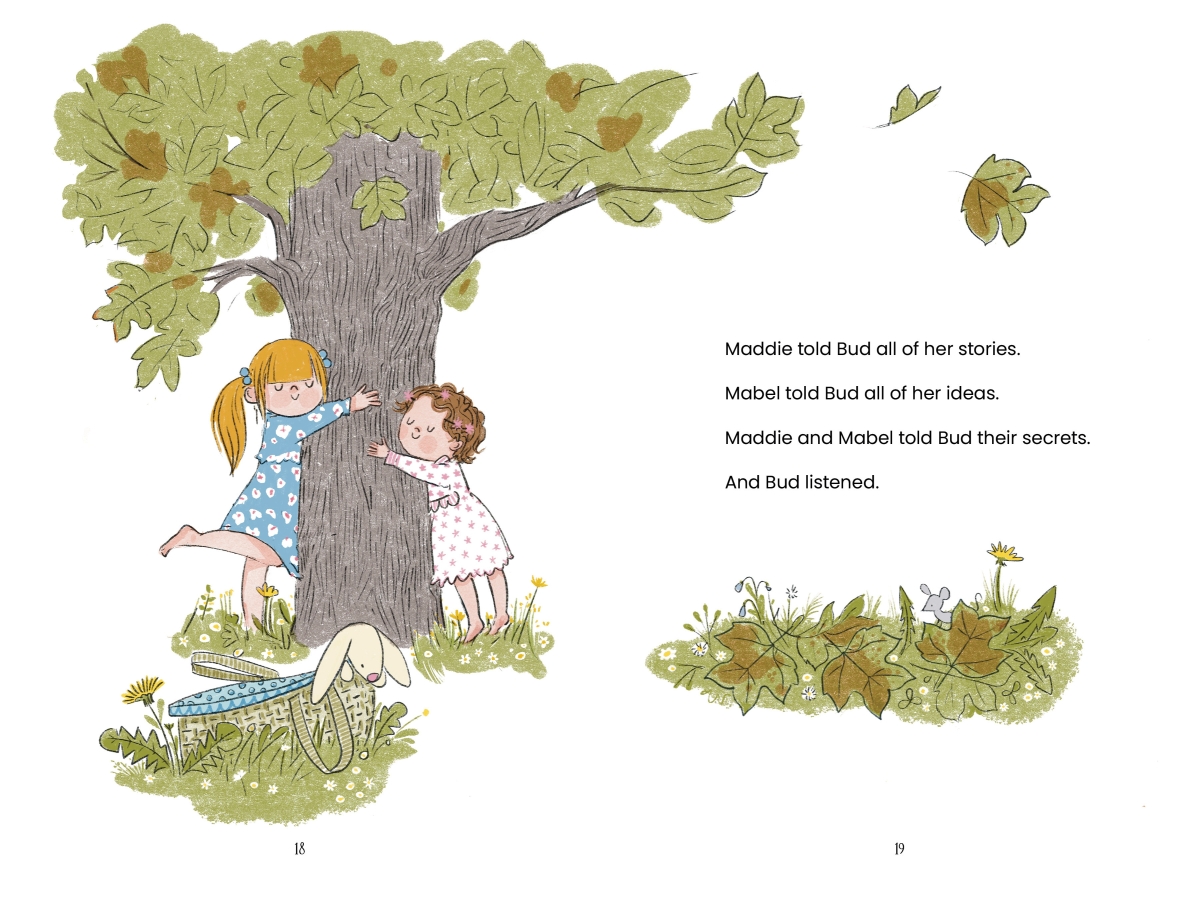
Illustration © Tatjana Mai-Wyss
JB: Tell about one hurdle you experienced in the creation of The Boy Who Loved Maps or provide a memorable (or humorous!) anecdote related to the writing of the book.
KA: The publishing process is exactly that: a process! There is no one map that works for everyone. For The Boy Who Loved Maps it took four years from selling it to book-on-the-shelf. I sold it pre-pandemic and was beyond grateful to be able to have a signing when it came out in July. I’ve watched a lot of authors become incredibly creative for their book launches as everyone had to reinvent the wheel these past few years. I think a hurdle would be the uncertainty of the last few years and just not knowing for so long what a book launch would look like.
JB: What would surprise readers to learn about you or about the writing of the Mabel and Maddie books?
KA: All of the stories have some basis in real life! My sister and I had lots of adventures together and that’s what I used as the building blocks of Maddie And Mabel. Although, the rabbit story comes from my husband and his brothers, and I borrowed (okay, maybe stole) it.
JB: What do you hope readers will take away from The Boy Who Loved Maps?
KA: There’s so much! I hope they find an interest in maps and all the layers of information they can convey. I also hope that maybe readers will explore that home can mean a lot of things. It doesn’t have to be your actual house or apartment, it’s whatever place that makes you feel good and safe.
JB: How do you see The Boy Who Loved Maps connecting to curriculum or being used in schools?
KA: Well, obviously I think it could be used to help teachers introduce maps and think about mapping. The back matter at the end of the book has a bunch of activities for teachers and kids to try out. It also walks you through making a map of your neighborhood or home. I tried to create some out of the box activities, too, that I am excited about. I can’t wait to see what teachers do with them! It could be a way to explore communities and your neighborhood. I also think maps can be used to talk about change, history and culture.
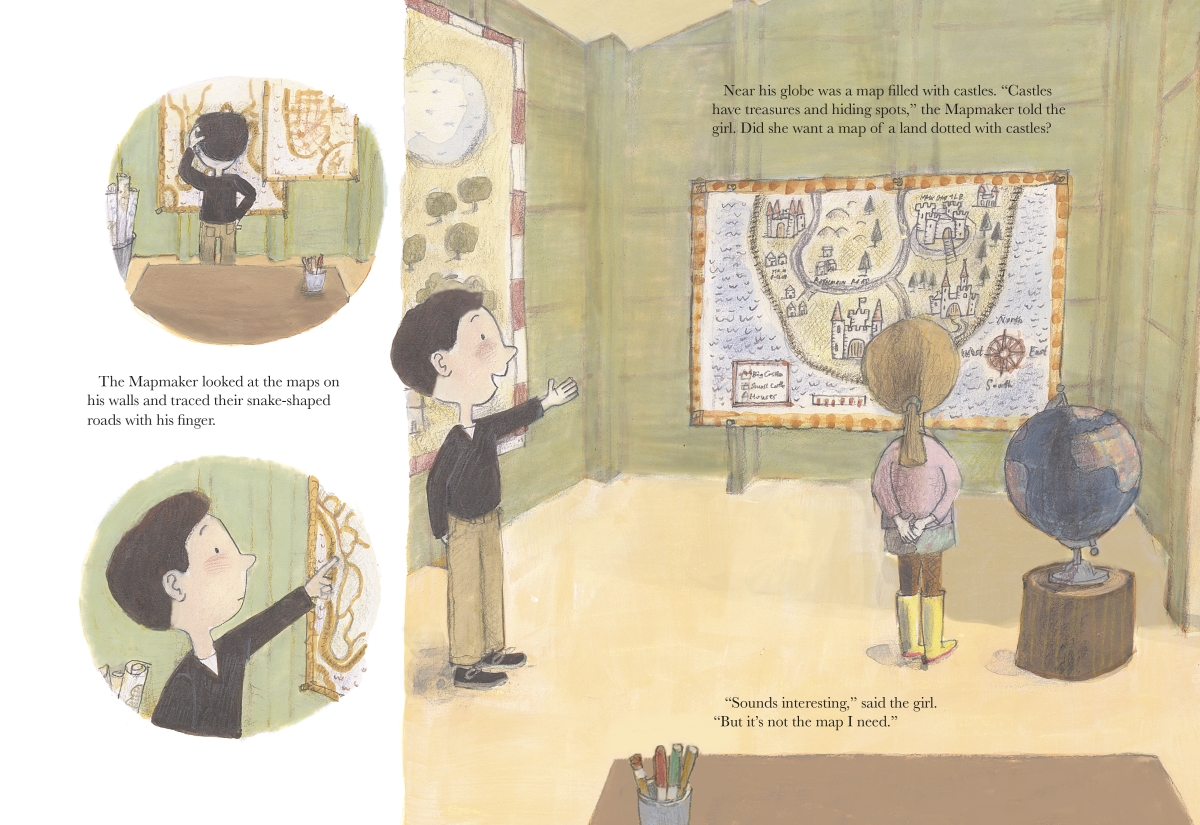
Illustration © G. Brian Karas
JB: How do you see the Maddie and Mabel series connecting to curriculum or being used in schools?
KA: I hope it finds newly independent readers! I wanted to write something that felt authentic to kids and that was hopefully something they wanted to reread. Sometimes with early readers kids read them once and are done. I hope that readers come back to Maddie And Mabel more than once! I think it could be used to open up conversations in classrooms and at home. I wrote a whole educator’s guide for it! So I think it has lots of classroom applications.
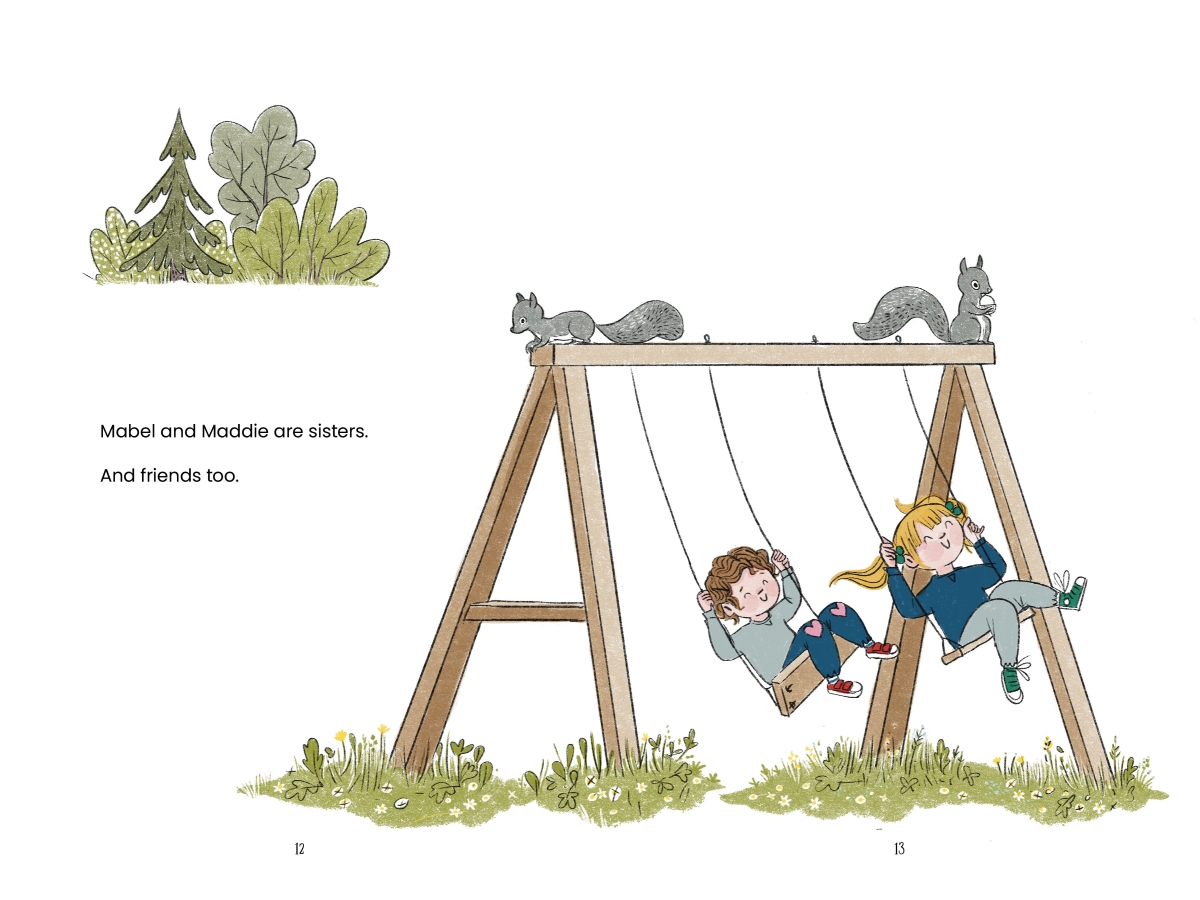
Illustration © Tatjana Mai-Wyss
JB: What is one question you wish I had asked, and what is your answer?
KA: Hmmmmm. What’s your favorite color? It’s one my students ask me all the time.
And the answer… My favorite color changes every day. Sometimes it’s the gray of a rainy day or it’s lake blue or marigold orange. There are too many amazing colors to pick!
JB: What project are you currently working on?
KA: Maddie and Mabel number four! Book three, Maddie and Mabel Know They Can, is written and edited, and will be out in Spring 2023. Now I am working on book four. I also just completed edits for an as-yet-unannounced board book that I am excited about, too!
About the Illustrators
Learn more about Tatjana Mai-Wyss and find her on Instagram.
Learn more about G. Brian Karas.
Sidebar Spotlight New releases of note
Each month I receive several boxes of books to review from various publishers. As I read and peruse the books, I place them in two piles: those that I will consider featuring on the blog, and those that don’t fit the mission or theme of Children’s Book Corner blog for whatever reason. I highlight some of the books in the “possible” pile on Mondays (most weeks) on Instagram. Ultimately, I choose the one new release I will feature on my monthly blog post. Yet there are many terrific books I wish I could give a shout-out to, even if I can’t write an entire post about each one. So, Sidebar Spotlight is a means of giving a nod to new releases that, in my opinion, are noteworthy. I’ve linked each title to Bookshop so you can learn more. Happy reading, friends! And feel free to comment below.
- Afraid of Your Neighbor by Katharine E. Volk, illustrated by Malgosia Zajac; a book about assumptions that would pair well with Cayuga Island Kids, Book 3, The Case of the Messy Message and the Missing Facts
- Can You Believe It? How to Spot Fake News and Find the Facts by Joyce Grant, illustrated by Kathleen Marcotte; an ideal companion for Cayuga Island Kids, Book 3, The Case of the Messy Message and the Missing Facts
- The House That She Built by Mollie Elkman, illustrated by Georgia Castellano; explains in simple terms eighteen skilled trade jobs that help build a home—shown here completed by women
- The People’s Painter: How Ben Shahn Fought for Justice with Art by Cynthia Levinson, illustrated by Evan Turk; Robert Sibert Medal; an enlightening story about persistence and commitment that i discovered while at ALA.
- A Sky-Blue Bench by Bahram Rahman, illustrated by Peggy Collins; Schneider Family Book Award Honor Book
- Something Wonderful by Matt Ritter, illustrated by Nayl Gonzalez; Indie Book Awards Winner; a lush book about ecology with a fresh perspective
- Song in the City by Daniel Bernstrom, illustrated by Jenin Mohammed; a blind girl shares the joy and spirit of the sounds of the city with her grandmother. See Children’s Book Corner blog post featuring Daniel Bernstrom’s Big Papa and the Time Machine.
- Standing in the Need of Prayer: A Modern Retelling of the Classic Spiritual by Carole Boston Weatherford, illustrated by Frank Morrison; simply stunning!
News & Updates
Check out SEL in 5, a brief monthly e-newsletter (free or paid subscription) offering 3 thoughts on leading SEL efforts, 2 quotations from researchers or practitioners in the field, and 1 question to consider related to SEL. Hosted by Nick Woolf as part of Inside SEL.
The National Council of Teachers of English (NCTE) has developed a Position Statement on Writing Instruction in School.
I was thrilled to donate a Little Free Library to celebrate the Cayuga Island Kids series. It was installed in Jayne Park on Cayuga Island in Niagara Falls, NY, the setting of the books. We followed the installation with an event that featured a craft activity in which kids created kindness rocks, a part of the plot of the third book, The Case of the Messy Message and the Missing Facts.
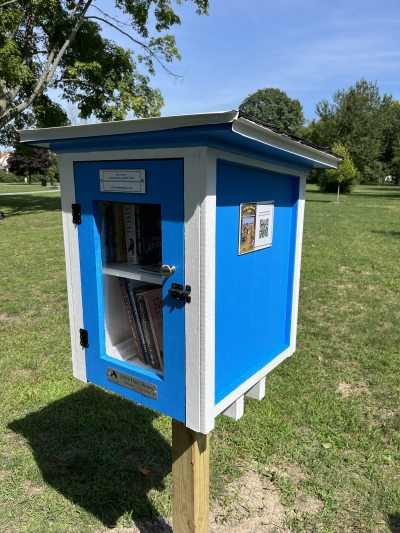
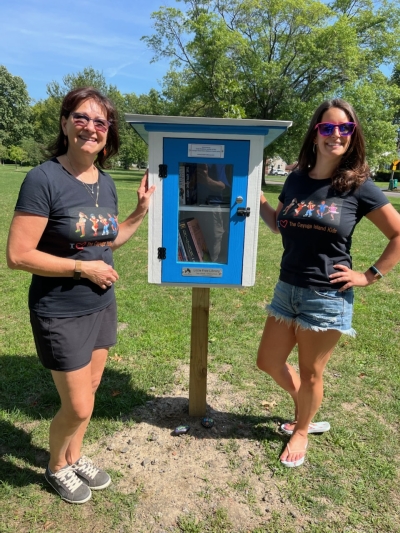
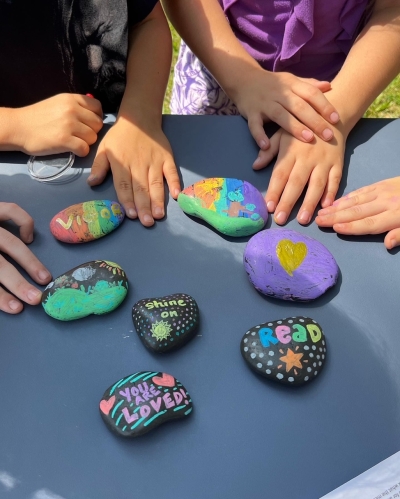
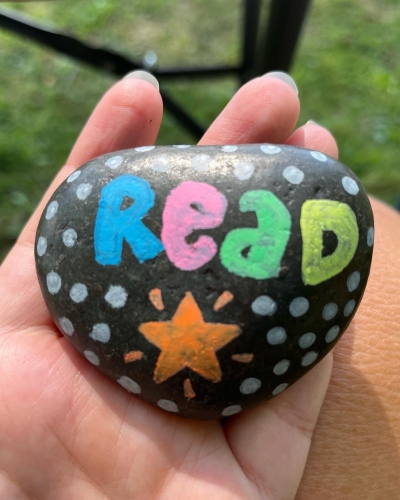
Find information on where I’ll be this month and throughout the fall on my Events page.
I’m especially looking forward to speaking at the SCBWI West/Central NY “Playing with Words & Pictures” conference where my topic will be “From Cannonballs to Glitter Pens: Researching the Details that Thread Your Story.”
and participating in the Rochester Children’s Book Festival taking place in person at RIT on November 5.
Final Thought
True navigation begins in the human heart. It’s the most important map of all. ~ Elizabeth Kapu’uwailani Lindsey

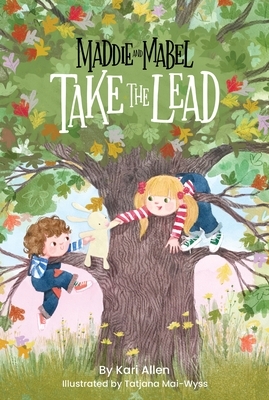
I enjoyed getting to know Kari Allen and her books better. Thank you, Judy, for the informative interview, and congratulations too, on your Little Free Library in honor of all the Cayuga Island Kids–both fictional and real. It looks great!
Thank you, Marsha! It was exciting to place the Little Free Library in the park on Cayuga Island in Niagara Falls, New York, where the series takes place.